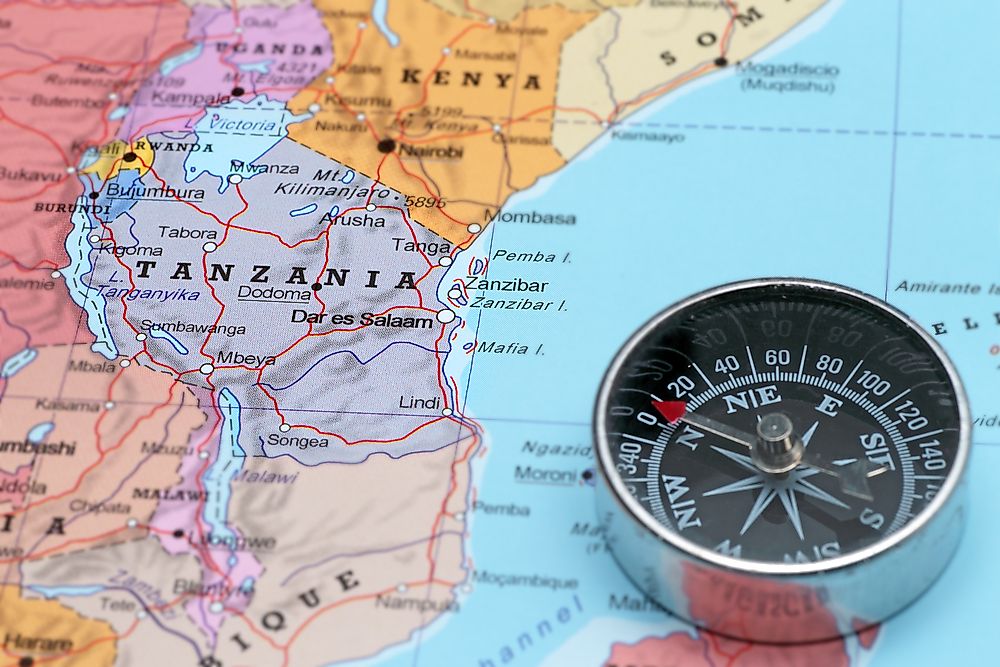What Countries Border Tanzania?

Tanzania is located in the eastern portion of Africa. Formally known as the Official Republic of Tanzania, this southern nation is home to Mount Kilimanjaro, which stands at a height of 16,100 feet, as well as a number of major lakes known collectively as the African Great Lakes. The nation is home to approximately 59,730,872 people and covers a land area of 342,009 square miles. Tanzania is bordered by seven countries: the Democratic Republic of the Congo, Burundi, Kenya, Uganda, Mali, Mozambique, and Rwanda.
The Democratic Republic of the Congo
This African nation, which operates under the national motto “Justice-Peace-Work”, ranks as the second largest nation on the African continent with a land area of 875,313 square miles. According to recent figures the country is home to 84,962,757 citizens with a population density of approximately 96 people per square miles. The Congo is well known for its abundance of natural resources (including diamonds, copper, and cobalt ore) as well as for its long history of French colonialism and continuing issues involving widespread political corruption and violence.
Burundi
Formally known as the Republic of Burundi, this landlocked African nation has three official languages: Kirundi, French, and English (which was added in 2014). Burundi’s current population is estimated to be 11,343,003 with the nation’s annual growth rate reported to be almost double the world average. It has been estimated that females in Burundi on average give birth to six children during their lifetime which is almost three times more than the global fertility rate.
Kenya
The national motto of Republic of Kenya, translated from Swahili, offers the unifying message of “Let us pull together”. Comprising a land area of 219,746 square miles Kenya has a population of some 51,398,266 residents. The nation is home to members of a wide variety of ethnic groups including Kalenjin, Kamba, Kikuyu, Kisii, Luhya, Luo, and Meru communities as well as various residents with roots in an array of neighboring African countries and a small percentage of people with non-African heritage.
Uganda
The landlocked nation of Uganda, or the Republic of Uganda, is home to a population of approximately 44,776,486 people with a population density of 574 inhabitants per square miles. Covering 77,147 square miles this former colony of the United Kingdom gained its independence in 1962. Currently the country’s political system operates as a partially presidential republic with the Ugandan president acting as both the formal head of state as well as the leader of the government.
Mali
The Republic of Mali, a former French colony, gained its independence from the European nation in 1960. This landlocked nation, which takes up 471,118 square miles of land, includes an ever-growing population of 19,310,688 people with a density of 41 people per mile. According to recent statistics the average age of residents in Mali is only sixteen.
Agriculture continues to play an important role in the economy of Mali. It’s estimated that some 80% of Mali’s populace earn their income working in the agricultural industry. Important products include cotton, tobacco, millet, and rice. Mali is also well known for its gold mines as well as for exporting other natural resources such as salt, kaolinite, limestone, and phosphate.
Mozambique
Officially known as the Republic of Mozambique, this African nation currently has a population of 30,836,906 all of whom occupy a total land area of 303,623 square miles. The nation’s population density stands at 101 people per square mile. The average age of residents is approximately seventeen with 31.6% of the country’s total population living in its urban areas.
The national government consists of a President, Prime Minister, Council of Ministers, and National Assembly which is made up of 250 representatives. The country is comprised of ten provinces; Cabo Delgado, Gaza, Inhambane, Manica, Maputo, the capital city of Maputo, Nampula, Niassa, Sofala, Tete, and Zambezia.
Rwanda
The Republic of Rwanda is home to 12,605,780 residents with a population density of 1,312 people per mile. 34% of the country’s citizens live in the nation’s urban areas. The country occupies a land area of 9,525 square miles. Rwanda has a number of official languages including English, French, Kinyarwanda, and Swahili.











